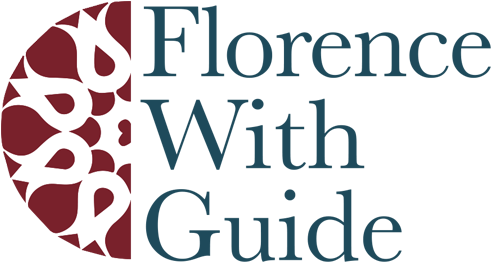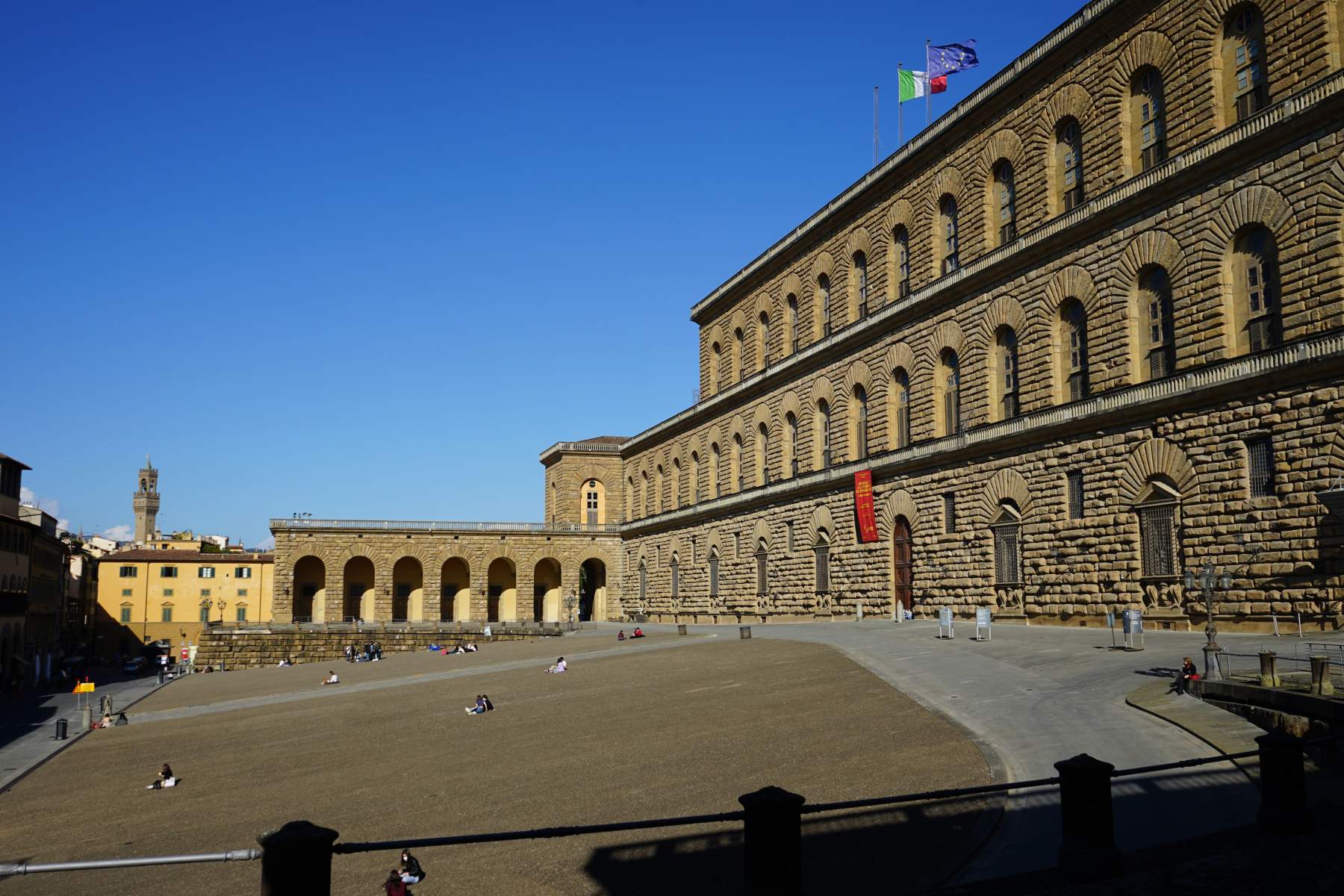Oltrarno: grand dukes and local folk
Located on the left bank south of the River Arno, Oltrarno is the smallest portion of the city center, and yet it offers a surprising number of different experiences for its size. These range from marveling at the grandeur of the Pitti palace to taking a stroll past the homes of more ordinary people, from discovering the great masterpieces of the Renaissance to seeing local artisans at work, from wondering at Raphael’s eternal talent to feeling like a local in some of the most fashionable bars in town. Below are some of the many possible tours.
Royal Oltrarno
Palazzo Pitti was chosen by the Medici as their residency after they became grand dukes and is now home to several museums:
- The Palatine Gallery is the museum that can pride itself on exhibiting more of Raphael’s works than any other in the world, including “the Grand duke’s Madonna” and the “Velata”. In addition, Tiziano’s “Magdalene”, Caravaggio’s “Sleeping Love”, Rubens’ “Consequences of War” and Giorgione’s “Three Ages of Man” are just a few of the other masterpieces that make this gallery a must-see for all art lovers.
Moreover, the museum has much to offer to those who want to discover some of the city’s hidden gems:
- The Treasury of the Grand dukes is a sublime collection of jewellery, mosaics and cameos.
- The Modern Art Gallery is a compelling collection of paintings and sculptures from the 18th and 19th century.
For stroll-lovers:
- The Boboli Gardens is the sumptuous park of the palace where we can wander at will through grottoes and hidden paths, marveling at sculptures and fountains.
- The Rose Garden and the Bardini Garden are two of Florence’s hidden treasures, where rare flowers grow against some of the city’s best views.
- The artisan workshops. After wandering through open spaces, we drop by some of the finest workshops in town. Here you will see how centuries-old knowledge is put to work transforming silver, gold, wood, bronze, fabric, leather and paper into miniature works of art.
The Renaissance in Oltrarno
Oltrarno is home to two of the treasures of the Florentine Renaissance, each one located only a few steps away from the other:
- The Brancacci chapel is the place where Masaccio conceived some of the most acclaimed frescoes of all time and lifted the curtain on the visual arts of the Renaissance.
- Santo Spirito Church is Filippo Brunelleschi’s last masterpiece.
Oltrarno – Florence’s Left Bank
In recent years, Oltrarno has gained the reputation of the most fashionable area in Florence. Some compare it to Montmartre, while others to the East Village. However, Oltrarno is nothing like Paris or New York: it is a quintessentially Florentine quarter. For this reason, going for a walk in Oltrarno is easier said than done. It is a multifaceted neighbourhood offering countless experiences. We will certainly be able to help you find your way around and become familiar with its true spirit. Below is a description of some of the possibilities that we can combine to create the perfect tour for you.
During its 500 years of existence, the Pitti Palace has been the home of three dynasties, the Medici, the Lorena and the Savoia. This makes it a unique testimony to the elegance, eccentricities and excesses of court life. The sumptuous rooms of the Palatine Gallery are a triumph of decorative art and a perfect match for the world-class collection of 16th- and 17th-century paintings displayed. Finding your way through so much beauty could be difficult, but you need not worry, as we are there to guide you. We will shed light on the principal exhibits and help you become familiar with Raphael, whose thirteen masterpieces form the core of the collection. No other museum has so many of his works on display, nor allows you to follow the artistic development of his genius so well as the Palatine Gallery does.
In addition, if you are interested in discovering more of Florence’s less well-known treasures, the tour can be extended to two other parts of the museum. The Treasury of the Grand Dukes exhibits a jewellery collection that will certainly inspire fashion and luxury lovers.
The Modern Art Gallery is the perfect place to witness how Florence’s artistic impulse developed beyond the Renaissance. The highlights of the collection are paintings from Fattori, Signorini and Lega, the three initiators of the Macchiaioli movement whose uncompromising vision is unanimously considered a precursor of French Impressionism.
This is not all! Oltrarno has plenty of green spaces for all stroll lovers. First and foremost, there is the Boboli Gardens, the ancestor of all European gardens. Here, at the Medici’s wish and command, nature was made into a stage for fountains, sculptures and unusual architectural designs. The garden served as a place of relaxation, celebration and unconventional theatrical presentations for the grand dukes of the family. Our walk can easily continue to the Rose Garden and the Bardini Garden. These are two of Florence best-kept secrets, where natural beauty and breathtaking views will compete for your attention.
Oltrarno is still home to several masters of authentic craftwork, who keep Florence’s traditions alive. They are very easy-going people, so they will not object if we call in and take a look at how they create their treasures by putting centuries-old skills to work. It is also worth mentioning here that we are NOT sponsored by any workshop and you are NOT expected to buy anything.
Lastly, if you are keen to discover the beating heart of the Renaissance, Oltrarno has much in store for you. If Florence is considered to be the cradle of the Renaissance, then the Brancacci chapel is certainly its precise birthplace. Here a 26-year old Masaccio conceived a revolutionary way of painting and his frescos became a watershed in the history of Western art. Similarly, the church of Santo Spirito is testimony to the achievements of another mastermind of the period, Filippo Brunelleschi. The church was the architect’s last project and can be considered the artistic fulfilment of his life-long search for perfect proportionality.
Practical information
- Any tours, or individual parts of one particular tour, can be combined according to your wishes.
- We are ready to help you draw up the most suitable program, so do not hesitate to ask.
- Availability: The details of a tour will be to some extent defined by a museum’s opening hours, but please feel free to ask any questions you may have on the programme.
- Length: 3 hours are recommended, 2 hours are the minimum duration
- Rates: HD tour 240€. Rates are per tour and not per person.
- Tickets and reservations are not included in our rates
The tours are suitable for those using a wheelchair or with impaired mobility.

